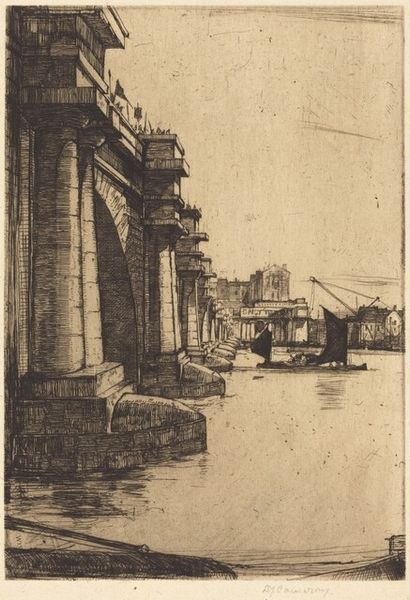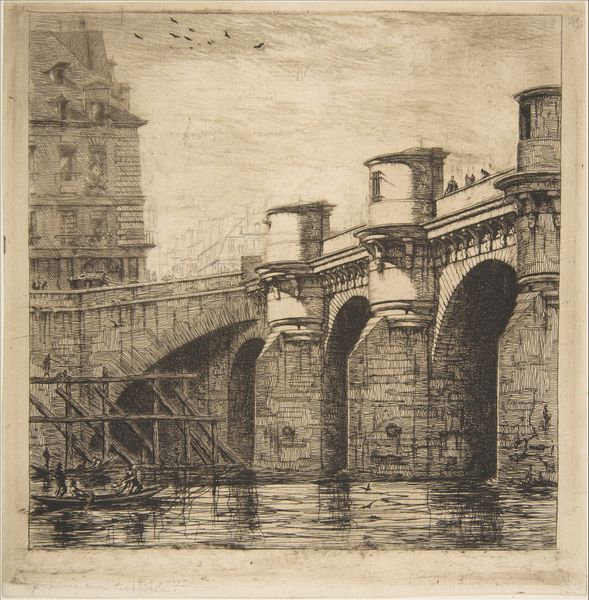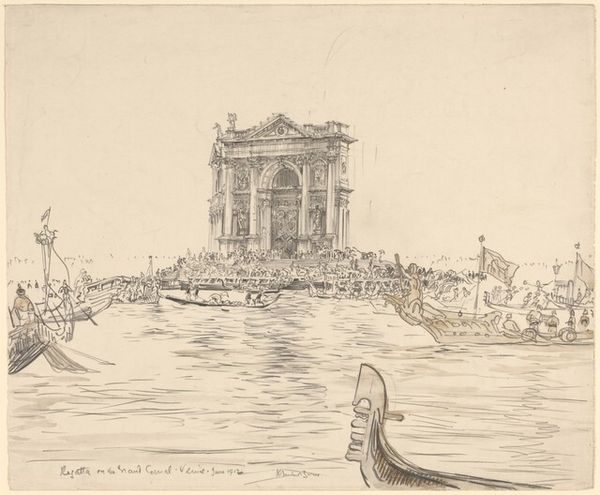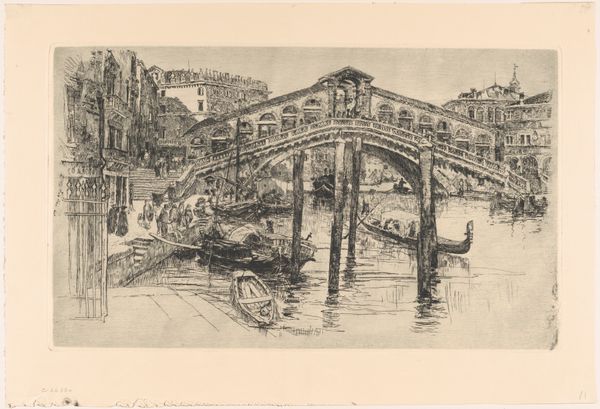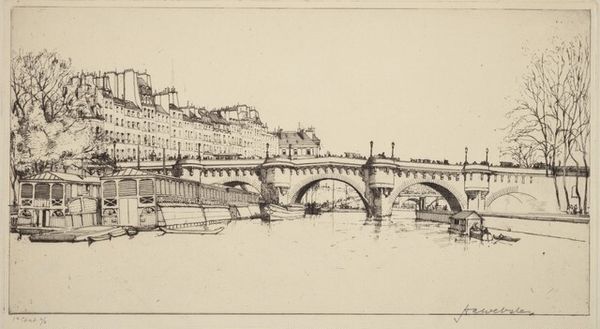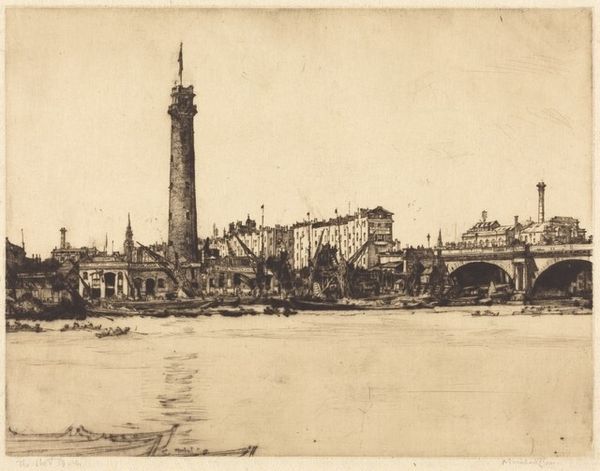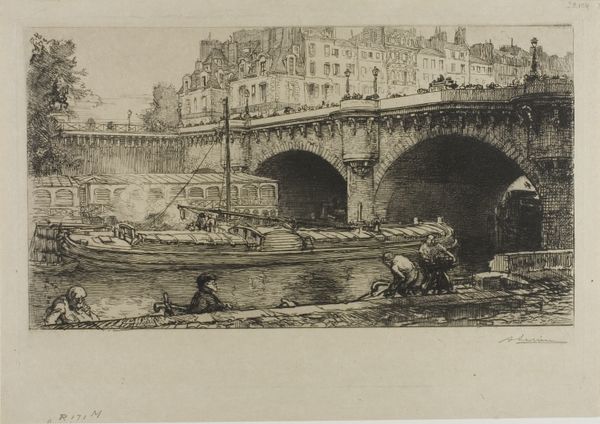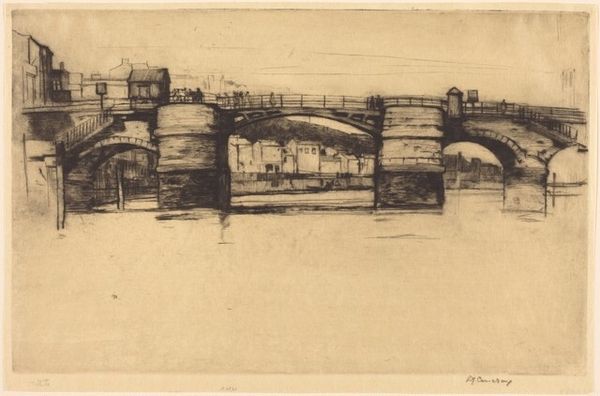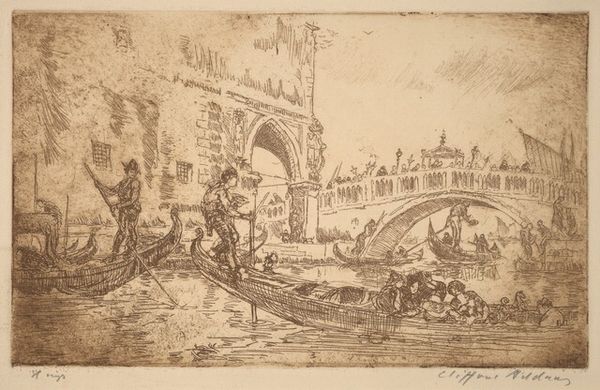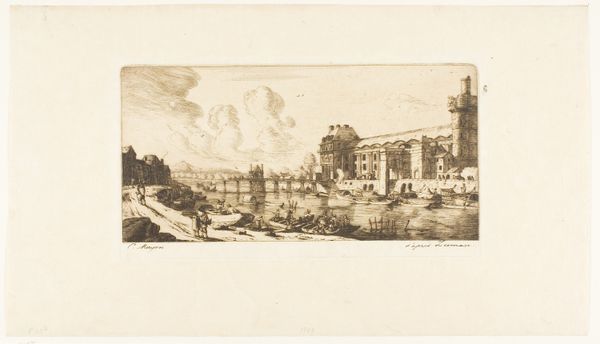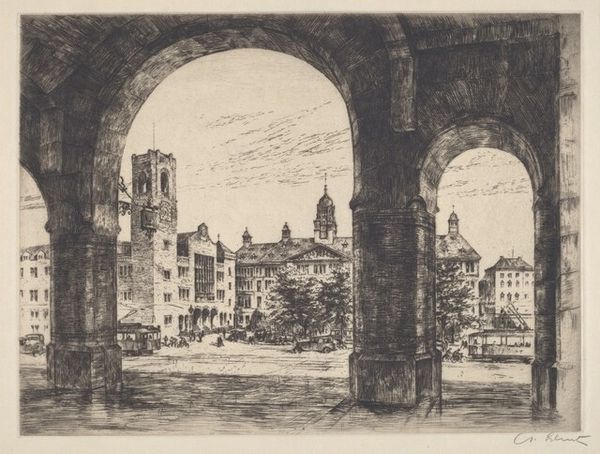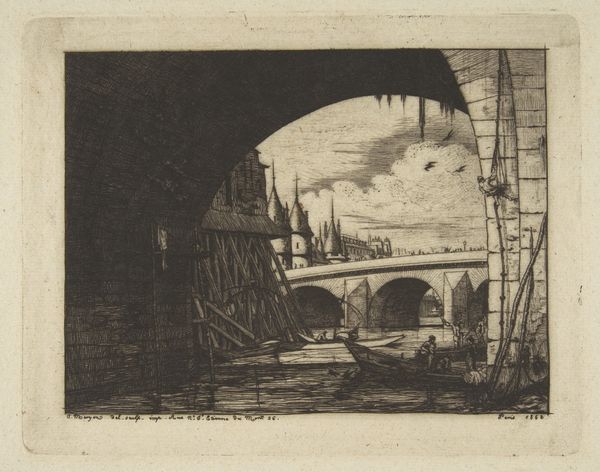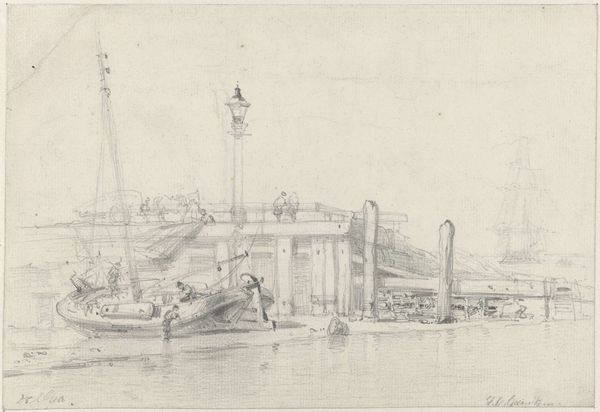
print, etching
# print
#
etching
#
landscape
#
orientalism
#
cityscape
#
realism
Copyright: National Gallery of Art: CC0 1.0
Editor: So, this is David Young Cameron's "Waterloo Bridge, No. 1," an etching from 1899. The atmosphere feels heavy, almost melancholic, with that massive bridge looming over the water. What do you see in this piece? Curator: I'm drawn to the bridge itself, a solid structure teeming with tiny figures almost like ants. Think of bridges as enduring symbols - connectors, passageways, and also barriers. Its looming presence suggests the weight of history, progress, and the sheer scale of human endeavor, yet the diminutive figures suggest an impermanence. How does this contrast speak to you? Editor: I see what you mean. The figures are tiny, and I didn’t register them initially, dwarfed by the monumentality of the bridge, but are they perhaps also an embodiment of collective energy or movement? And is there a relationship here to orientalism? Curator: Indeed. Remember that the Thames, like any great river, functions as both artery and mirror. Commerce, cultural exchange…the orientalist tendency might reside in the romanticized view of this industrialized landscape, softened through the etching technique to create an exotic vision of London’s familiar skyline. How do you interpret the effect of light and shadow in contributing to this "exotic" atmosphere? Editor: The light seems to wash out certain details, while the shadows add to the somber, reflective mood. The absence of bold color or sharp contrast softens any industrial harshness, that’s for sure. It’s more about mood than documentary. Curator: Precisely. And note how the linear precision, typical of etchings, captures architectural details. The repetition of arches can represent strength and continuity, mirroring our own ability to construct, and also to persist across time. What will viewers connect to most? Editor: Probably the iconic silhouette, yet it’s now apparent that there are so many layers to unpick within it, prompting a wider conversation about history, human scale, and romanticism. Curator: Yes. And a great work like this should be doing just that: triggering memories and stimulating thought.
Comments
No comments
Be the first to comment and join the conversation on the ultimate creative platform.
